Definition Of A Lion: The King Of The Jungle
A lion is undoubtedly one of the most iconic animals in the world. Known as the “King of the Jungle,” lions have been a symbol of strength and power for centuries. But what exactly is a lion?
The definition of a lion: A lion is a large carnivorous mammal belonging to the Felidae family. It is one of the four big cats, along with tigers, leopards, and jaguars. Lions are found primarily in Africa, although a small population of Asiatic lions can be found in India.
There are several characteristics that define a lion. Firstly, lions are much larger than other types of wild cats. Adult lions can weigh up to 550 pounds and grow up to 8 feet long. They have a muscular build, with short, tan fur and a distinctive bushy mane around their necks.
- There are two types of lions: African and Asiatic.
- African lions are found in sub-Saharan Africa, while Asiatic lions live in the Gir Forest of India.
- Although it is often referred to as the “King of the Jungle,” lions do not actually live in jungles. They can be found in a variety of habitats, including grasslands, savannas, and even deserts.
While lions are known for their fearsome appearance, they are also social animals that live in groups called prides. Prides consist of multiple females and their young, along with a few male lions known as “coalitions.” Lions are also known for their powerful roar, which can be heard up to 5 miles away.
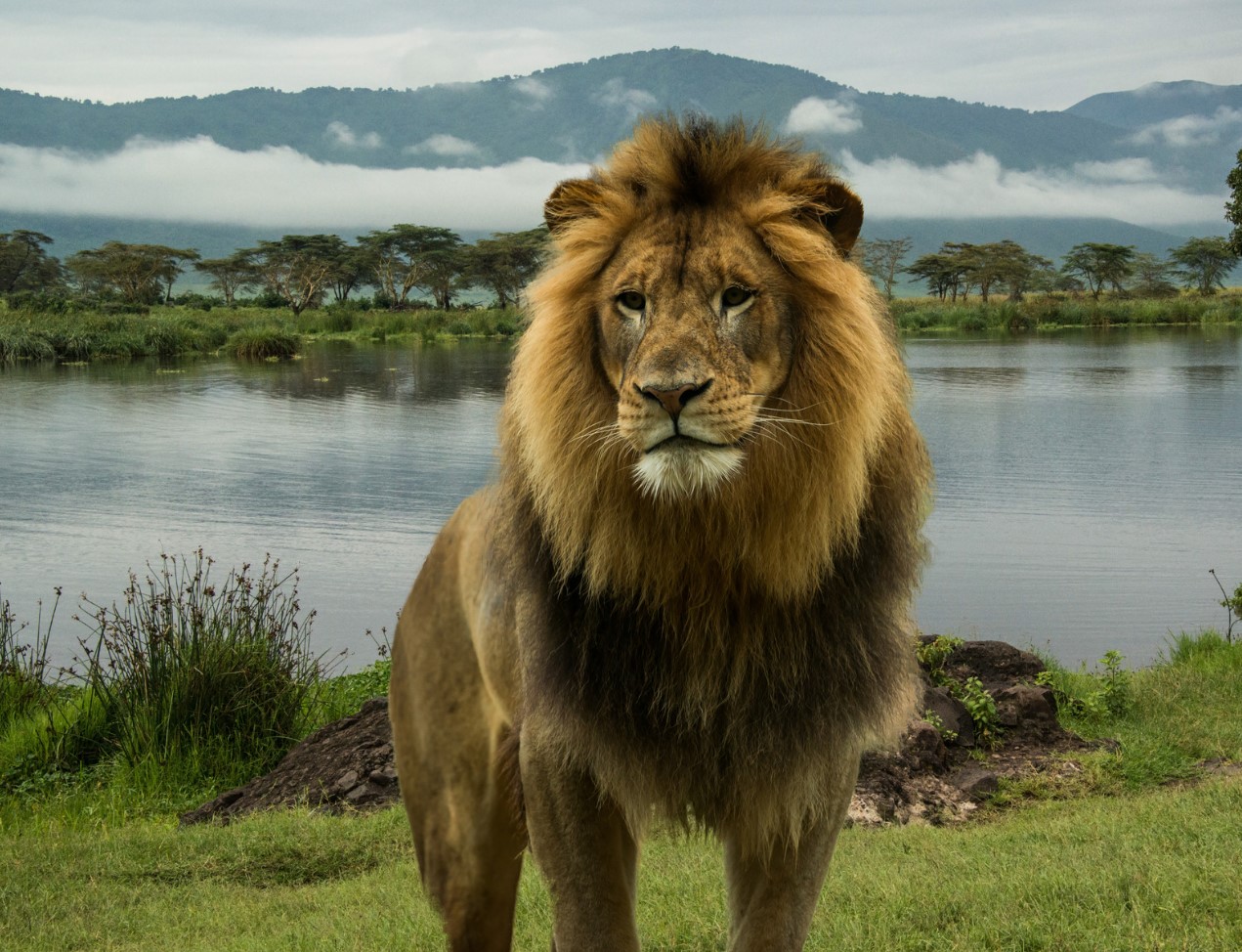
Overall, lions are an important part of the world’s ecosystems and hold a special place in human culture. Their strength, power, and beauty have captured our imaginations for centuries, and they continue to inspire awe and admiration to this day.
The Different Types Of Lions: Asiatic, African, And More
Lions are probably one of the most popular animals in the world and their majestic presence in the wild has attracted millions of tourists to wildlife parks and nature reserves. But did you know that there are actually different types of lions? In this blog post, we will explore some of the different types of lions such as Asiatic lions and African lions, and discuss their physical attributes, habitat, and population. So, let’s dive in and learn more about these incredible big cats!
Asiatic Lions – Also known as the Indian lion, the Asiatic lion is a subspecies of lion that can be found in the Gir Forest National Park in India. These lions are slightly smaller than their African counterparts, with a shorter and sparser mane. Unlike African lions, Asiatic lions live in smaller prides and their habitats are limited to a single geographic location. Sadly, these lions are also one of the most endangered big cats, with only around 500 lions remaining in the wild.
African Lions – African lions, also known as Panthera leo, are the most common and popular type of lion. They are found in sub-Saharan Africa and are known for their distinctive manes, which can range in color from blonde to black. African lions live in large prides, which can consist of around 15 individuals, and they can be found in a variety of habitats such as savannas, grasslands, and even forests. While they are not considered an endangered species, their population has decreased by 43% in the last 21 years, making conservation efforts crucial for their preservation.
- Barbary Lions – Also known as the Atlas lion, Barbary lions were once found in North Africa but were declared extinct in the wild in the 1960s. However, there are currently efforts to reintroduce these lions into their indigenous habitats, with a small population of captive-bred Barbary lions residing in the Rabat Zoo.
- Congo Lions – Found in the Congo Basin of Central Africa, Congo lions are slightly smaller than their African counterparts and are known to have a slightly different mane style, with no hair around their ears.
In conclusion, while lions are a single species, there are several different types of lions that have unique physical attributes, habitat preferences, and populations. Conservation efforts are necessary to protect all subspecies of lions and ensure that future generations can witness the majestic presence of these big cats in the wild.
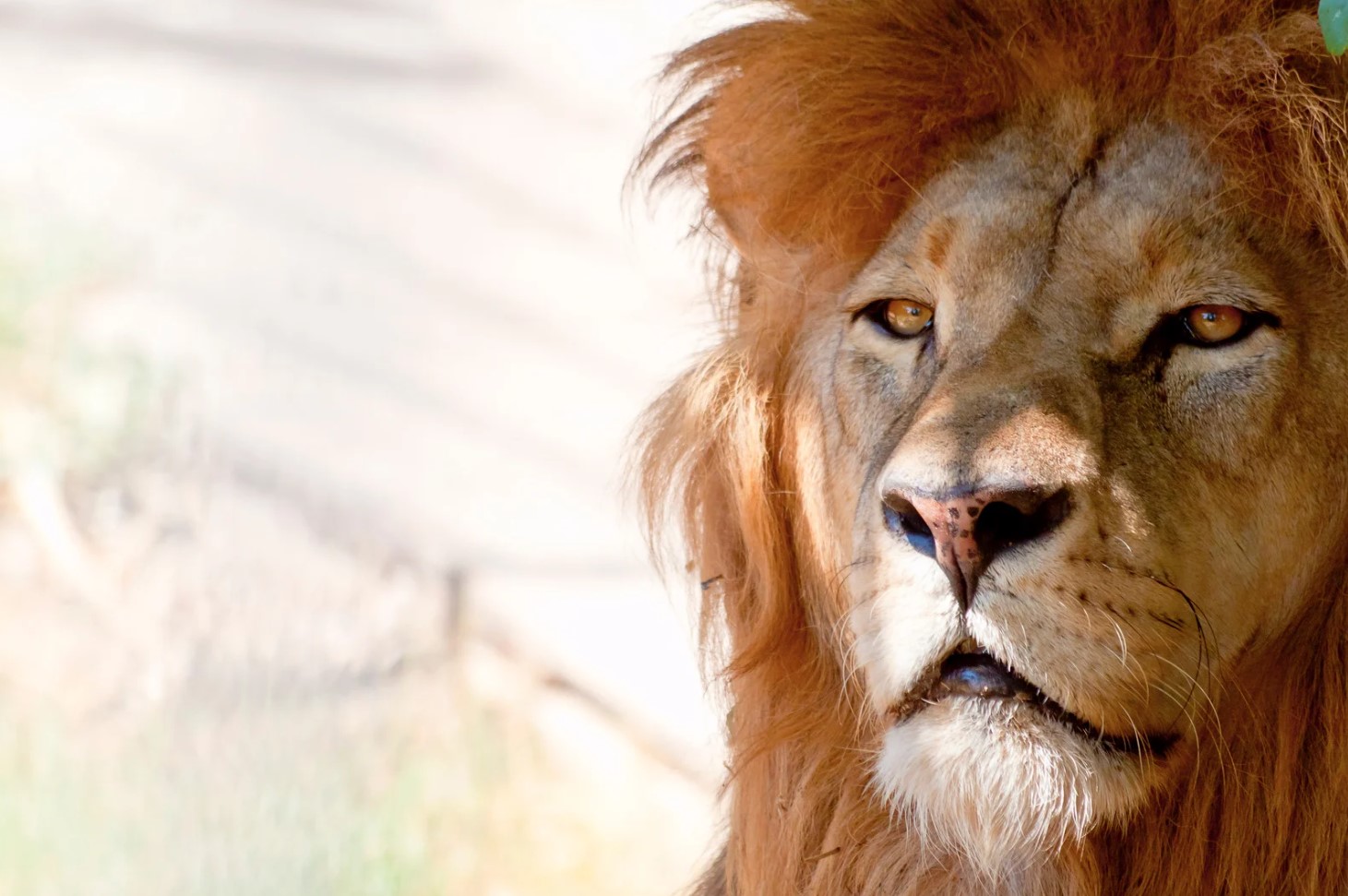
History Of Lions: Their Evolution And Origins
Lions are majestic creatures that have been admired by humans for centuries. They are known as the “King of the Jungle” and are revered for their strength and beauty. However, have you ever wondered where lions came from? In this blog post, we will explore the history of lions, their evolution, and origins.
Lions have been around for millions of years. The earliest lion fossils were found in eastern and southern Africa and date back to the late Pliocene period, around 5.5 million years ago. These early lions were much different from the lions we know today. They were smaller, had shorter legs, and lacked the characteristic mane that male lions are known for.
The common ancestor of all big cats, including lions, is believed to have lived around 10.8 million years ago in Asia. This ancestor, known as Proailurus, was a small, arboreal cat that lived in trees. Over time, some of these cats evolved into larger, more powerful cats, which eventually gave rise to the big cats we know today.
- Asiatic lions
- African lions
| Characteristic | Asiatic Lions | African Lions |
|---|---|---|
| Physical Features | * Smaller mane | * Larger mane |
| Habitat | * Gir Forest National Park, India | * Savannas, grasslands of Africa |
The evolution of lions was shaped by various factors, including competition for food, climate change, and adaptations to their environment. Lions have played an important role in human culture and mythology, and their conservation remains a priority in many parts of the world. The history of lions is a fascinating story that offers insights into the natural world and the complexity of evolution.
Physical Characteristics Of Lions: Mane, Teeth, And More
Lions are majestic creatures that are known for their beauty and strength. One of their most noticeable features is their mane, which is a thick and furry growth of hair around the neck and head of male lions. The mane is used to attract females and to intimidate other males. However, not all male lions have manes. It depends on their age, genetics, and hormone levels.
- Another unique characteristic of lions are their teeth. They have sharp canines that can reach up to 3 inches in length. These teeth are used for hunting and killing prey, as well as for defense. Lions also have strong jaws that allow them to bite with incredible force.
- In addition to their powerful teeth, lions also have strong legs and claws. Their legs are muscular and designed for running and chasing after prey. Their retractable claws are used for gripping and catching prey, as well as for climbing trees.
Overall, the physical characteristics of lions are what make them such formidable predators in the wild. Their mane, teeth, strong legs, and sharp claws all contribute to their ability to survive in harsh environments and to hunt for their food.
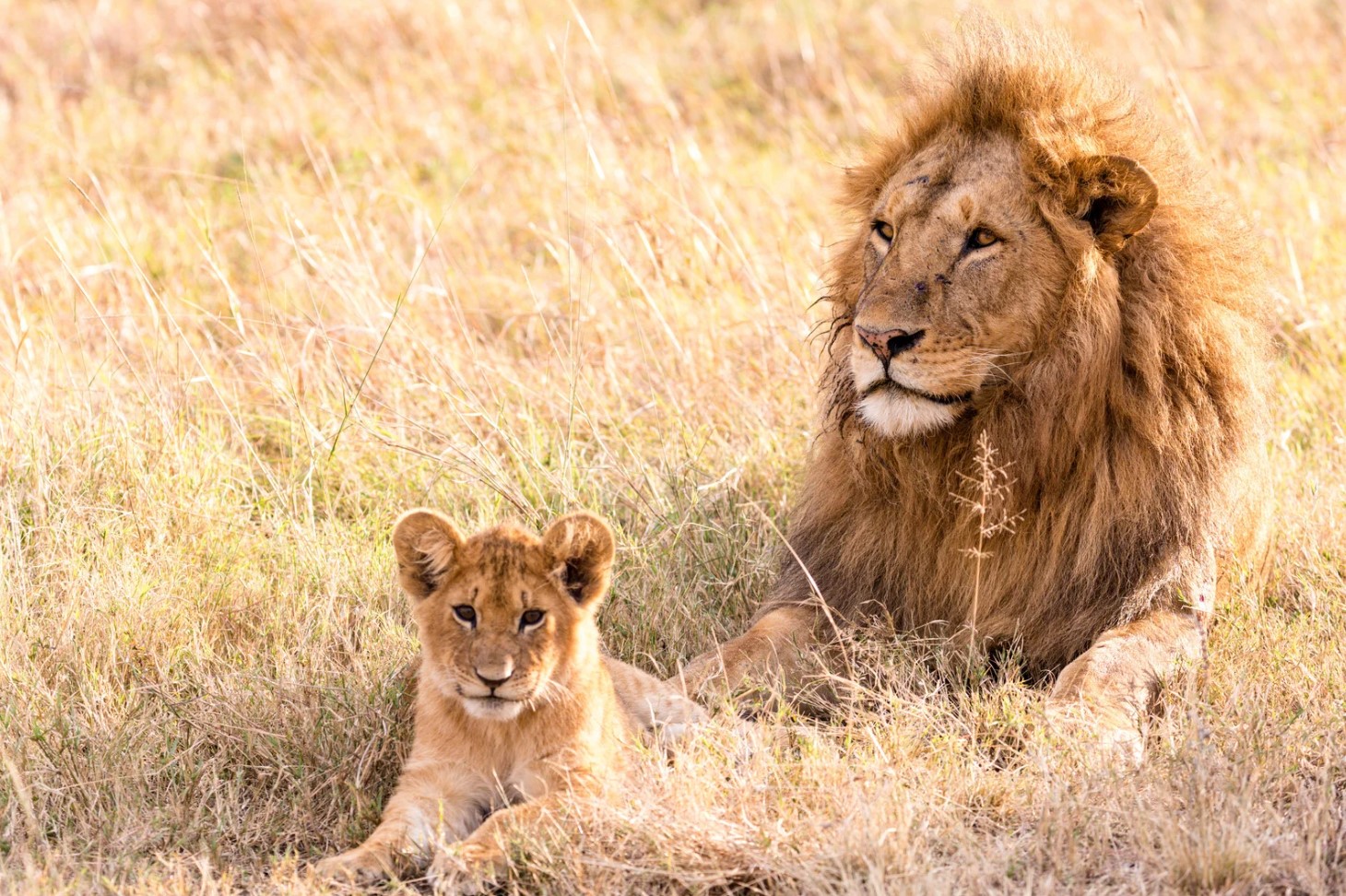
The Life Cycle Of A Lion: Birth, Maturity, And Death
A lion’s life can be divided into three stages: birth, maturity, and death. Each stage comes with its own unique characteristics and challenges. Understanding the life cycle of a lion is crucial for being able to appreciate these majestic creatures fully.
Birth: Lion cubs are born after a gestation period of around 110 days. Litters can range from one to six cubs, with the typical litter size being two to four. Cubs are born toothless, blind, and entirely reliant on their mother for survival. During the first few weeks of their lives, lion cubs spend most of their time nursing and sleeping. Around six to eight weeks old, they begin to venture out of the den and explore their surroundings.
Maturity: Around two to three years old, lion cubs reach sexual maturity. This is when they leave their pride and start to search for a territory of their own. Males will typically leave their natal pride, while females may stay with their family group. During this stage, lions are at their most physically fit and active. They spend their days hunting for food and protecting their territory from intruders.
- Death: Unfortunately, lions have a relatively short lifespan, with an average life expectancy of around 10-14 years in the wild. Many factors contribute to their mortality, such as disease, injury, and human activity. The latter is a significant threat to lion populations, with habitat loss and hunting being the most prevalent dangers.
As you can see, a lion’s life is full of challenges and milestones. From the vulnerable cub to the powerful adult, lions symbolize strength, courage, and resilience. We must do our part in protecting these majestic creatures for future generations to come.
Social Behavior Of Lions: Pride Dynamics And Social Structure
Lions are one of the most fascinating creatures in the animal kingdom. Not only are they known as the “King of the Jungle,” but they also demonstrate unique social behavior that makes them even more intriguing. In this blog post, we will be discussing the social behavior of lions, more specifically, their pride dynamics and social structure.
Lions live in groups called prides, which are typically made up of females, their cubs, and a few males. The size of a pride can range from just a few members to up to thirty individuals. The dominant lion or male, also known as the alpha, is in charge of leading the pride, protecting it, and reproducing with the females.
Within a pride, there is a hierarchy system in place, where each lion has a specific role to play. Females are the primary hunters and also take care of the cubs, while the males protect the pride’s territory and offspring. When a lion reaches maturity, they leave their pride and search for a new one to join or start their own. This helps to prevent inbreeding and preserve genetic diversity.
- Did you know that lionesses are more successful hunters than male lions?
- Another interesting fact is that lionesses synchronize their reproductive cycles, so they can all give birth at the same time and take turns caring for the cubs.
| Social Behavior | Description |
|---|---|
| Roaring | Males and females use roars to communicate and establish territory. |
| Grooming | Lions use grooming to strengthen bonds within their pride. |
| Cub Protection | Females work together to care for and protect each other’s cubs. |
Overall, lions demonstrate complex social behavior that is unique to each pride. By understanding their pride dynamics and social structure, we can appreciate these incredible creatures even more.
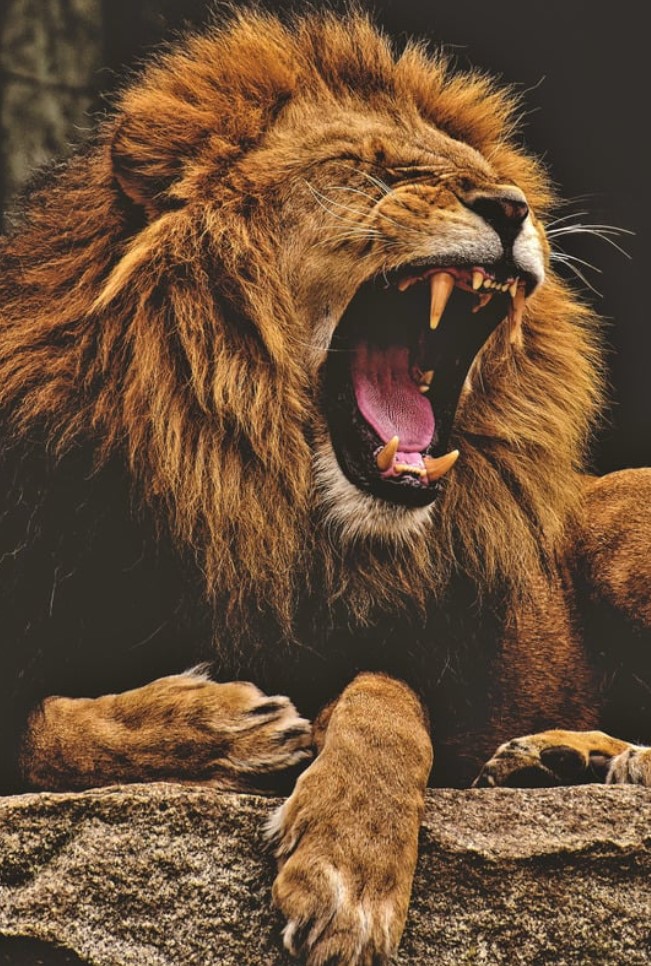
Diet Of Lions: Carnivore Habits And Prey Selection
Lions are carnivorous animals that prey on a variety of animals in their natural habitats. Their diet consists mainly of herbivores that can be found in the same habitat as themselves, such as zebras, buffalos, and antelopes. They are apex predators that sit at the top of the food chain, making them an important part of their ecosystem.
However, lions don’t just eat any animal they come across. They display a variety of hunting behaviors and selective feeding habits. For example, a pride of lions will work together to hunt down larger prey, but they will also hunt smaller animals individually. They also have a preference for certain types of prey, such as wildebeests and zebras which form the bulk of their diet.
- Some interesting facts about the diet of lions are:
- Lions can eat up to 40 pounds of meat in a single feeding session.
- They have powerful jaws and sharp teeth that can easily tear through flesh and tendons.
- Lions are opportunistic feeders, which means they will hunt whatever prey is available at the time.
| Common prey of lions | Habitat of prey |
|---|---|
| Zebras | African savannahs and grasslands |
| Wildebeests | African savannahs and grasslands |
| Buffalos | African forests and grasslands |
| Antelopes | African forests, savannahs and grasslands |
It’s important to note that the diet of lions can vary depending on their location and habitat. For example, lions found in the African savannahs will have a different diet compared to those found in the Asian jungles. This is because they have access to different prey species.
In conclusion, the diet of lions is a complex and interesting topic. They are carnivorous animals that display a variety of hunting behaviors and selective feeding habits. Their diet mainly consists of herbivores found in their natural habitats, and they have a preference for certain types of prey. Lions play an important role in their ecosystem as apex predators, and their diet is crucial in maintaining the balance of their habitat.
Reproduction Of Lions: Breeding, Gestation, And Birth
Lions are one of the most fascinating animals in the world. They are known for their majestic appearance, fierce nature, and being the king of the jungle. Reproduction is a vital part of their life cycle, as it ensures the continuation of their species. This article explores the reproductive process of lions, including breeding, gestation, and birth.
Breeding: Lions are typically social animals and live in pride. A pride usually consists of a few males, several females, and cubs. During mating season, which occurs from the months of January to April, the female lions become sexually receptive. Male lions roam around the pride, fighting with other males and asserting their dominance to mate with the female lions. After mating, the male typically leaves the pride, and the lionesses gestate their cubs.
Gestation: Lionesses have a gestation period of approximately 110 days. The pregnant lions become very protective and seek out a safe place to give birth. They usually choose a secluded spot in the pride’s territory, like a thicket or dense bushes. The lionesses prefer to give birth at night to ensure the safety of their young ones.
- Birth: Typically, lionesses give birth to a litter of 3-4 cubs. The cubs are born blind and helpless, weigh around 3 pounds each, and are entirely dependent on their mother for survival. Within 14 days of birth, the lioness introduces her young ones to the pride. The cubs are raised together, and the entire pride helps to provide for them.
It is essential to conserve these magnificent animals and their habitat to ensure their survival. The reproductive process is crucial to the survival of the lion species, and any threat to their habitat can lead to a decline in their population. Understanding the lifecycle and the significant stages like breeding, gestation, and birth could help us preserve these animals and ensure a better future for them.
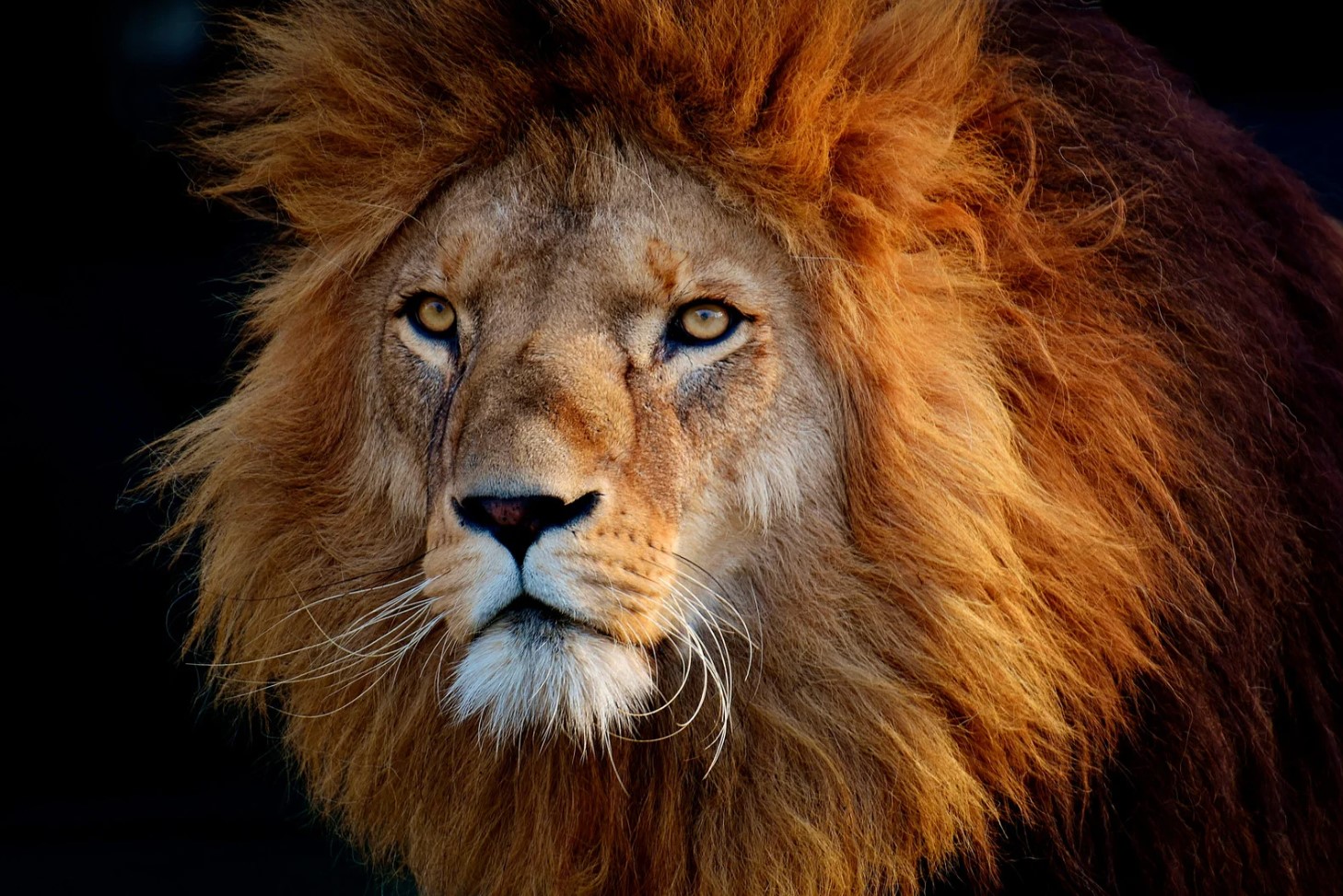
Habitat And Range Of Lions: Where Do They Live?
Habitat And Range Of Lions: Where Do They Live?
Lions, also known as the King of the Jungle, are majestic creatures that have captured the attention and imagination of many. These ferocious wild cats are native to Africa and can be found in a variety of habitats, including grasslands, savannas, and even some forested areas. They are also found in a few countries in Asia, such as India and Nepal.
- The African lion is the most well-known sub-species of lion, native to sub-Saharan Africa. They can be found in countries like Kenya, Tanzania, South Africa, and Zimbabwe, among others.
- The Asiatic lion, on the other hand, is found only in Gir Forest National Park in Gujarat, India. There are less than 500 Asiatic lions left in the wild, making them critically endangered.
A lion’s habitat is largely determined by the availability of prey, as they are carnivorous animals that require a substantial amount of meat to survive. They typically prey on large herbivores such as zebras, buffalos, and antelopes, and thus prefer areas where these prey animals are abundant.
| African lions | Asiatic lions |
|---|---|
| Sub-Saharan Africa | Gir Forest National Park, Gujarat, India |
| Grasslands, savannas, and some forested areas | Forested areas and scrubland |
| Estimated population: 23,000-39,000 | Estimated population: less than 500 |
However, lion populations are facing numerous threats, such as habitat loss, human-wildlife conflict, and poaching. Many organizations and governments are working tirelessly to protect these magnificent creatures and their habitats. Ecotourism, which involves visiting natural areas in a responsible and sustainable way, has also become an important way to support lion conservation efforts while providing visitors with a unique and memorable experience.
In conclusion, lions are incredible animals that have adapted to a variety of habitats throughout their range. However, they are facing numerous threats and require ongoing efforts to conserve their populations and habitats.
Lion Conservation: Threats, Efforts And Success Stories
The conservation of lions has become a pressing issue in recent years due to various threats that endanger the survival of these magnificent big cats. One of the main threats to lions is habitat loss. With human populations expanding and forests being destroyed, lion populations are being squeezed into smaller and smaller areas. Poaching is another major threat to lions, particularly in Africa where lions are hunted for their body parts, which are used in traditional medicine.
Despite these threats, there have been significant efforts made to conserve lion populations. One such effort is the establishment of protected areas such as national parks and reserves. Many of these areas have been set aside specifically for lion conservation, which helps to ensure that lion populations have enough space and resources to thrive.
- Another important conservation effort is the use of education and awareness campaigns. These campaigns are aimed at educating local communities about the importance of lions and their role in the ecosystem. By raising awareness about lions, we can help to reduce the demand for lion products and reduce poaching.
- Lion breeding and reintroduction programs have also been successful in preserving lion populations. These programs aim to breed lions in captivity and release them back into the wild. While controversial, these programs have had a positive impact in areas where lion populations have been decimated.
There have been some success stories in lion conservation as well, such as in India where the Asiatic lion population has increased from just 50 individuals in the early 20th century to over 500 individuals today. Similarly, in South Africa, lion populations have been successfully reintroduced into several reserves.
| Threats to Lion Conservation | Conservation Efforts | Success Stories |
|---|---|---|
| Habitat Loss | Protected areas such as national parks and reserves | The Asiatic lion population in India has increased from just 50 individuals in the early 20th century to over 500 individuals today |
| Poaching | Education and awareness campaigns, lion breeding and reintroduction programs | Lion populations have been successfully reintroduced into several reserves in South Africa |
Overall, the conservation of lions is an ongoing effort that requires the cooperation of governments, conservation organizations, and local communities. By working together, we can ensure that these magnificent big cats continue to roam the wild for future generations to enjoy.
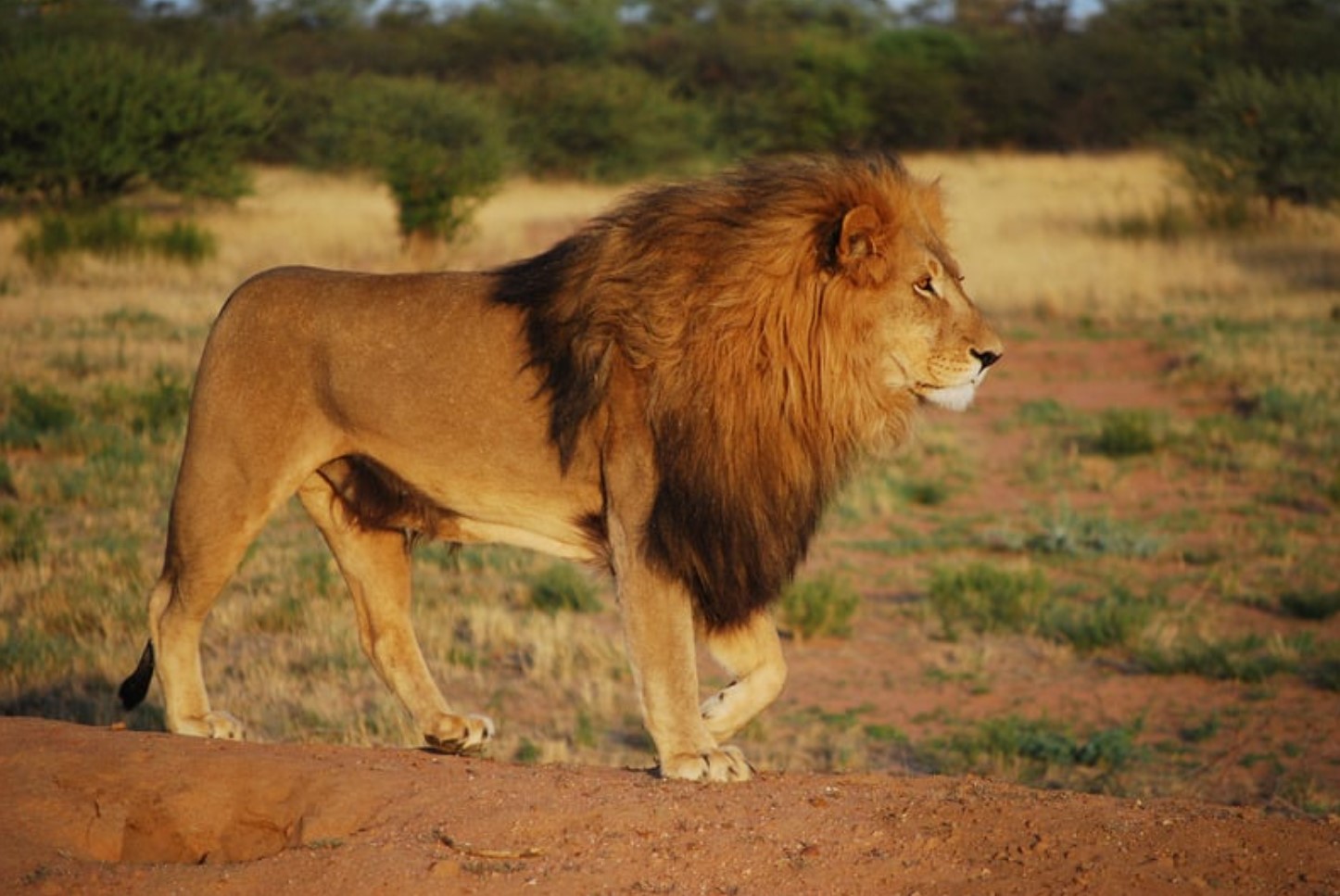
The Role Of Lions İn Culture And Mythology: Symbolism And Iconography
The lion, known as the “king of the jungle,” has long been an important symbol in culture and mythology across the world. Its strength, courage, and regal appearance have made it a popular icon throughout human history. Many ancient civilizations, including the Egyptians, Greeks, and Romans, revered the lion as a symbol of power, royalty, and protection. In more recent times, the lion has continued to play an important role in art, literature, and popular culture.
- In Africa, the lion is an important symbol in many tribal cultures. For instance, the Maasai people of Kenya and Tanzania consider the lion to be a sacred animal and a symbol of bravery and warriorhood. They even use the word simba (meaning lion) as a name for their most powerful chiefs and leaders.
- In Asian cultures, the lion is often depicted as a guardian, protector, and symbol of good luck. The Chinese lion dance, performed during festivals and celebrations, is believed to bring prosperity and ward off evil spirits. The Hindu goddess Durga is often depicted riding a lion, representing her strength and fearlessness.
- In Western cultures, lions have been used as symbols of royalty and power since ancient times. The coat of arms of many European countries, including England, Scotland, and Belgium, feature lions prominently. In literature, lions are often used as a metaphor for courage, strength, and nobility. For instance, in C.S. Lewis’s “The Lion, the Witch, and the Wardrobe,” the lion Aslan represents Christ, while also embodying the traits of bravery and self-sacrifice.
| Country | Lion Symbolism |
|---|---|
| Egypt | Lion-headed goddesses and sphinxes |
| Greece | Lions are associated with the god Dionysus and are often depicted on vases and sculptures |
| Rome | The lion is often depicted in art and architecture, including the Colosseum and Trajan’s Column |
| India | The Hindu goddess Durga is often depicted riding a lion |
The lion’s connection to royalty, power, and bravery has also made it a popular symbol in modern sports. Many sports teams around the world use a lion as their mascot or logo. For instance, England’s national soccer team has a lion on its emblem, while the Detroit Lions of the NFL use a lion as their team name and logo.
Despite its cultural significance, lions face many threats in the wild. Habitat loss, poaching, and human-wildlife conflict are all major issues that put lions at risk. However, conservation efforts are underway to protect these iconic animals and ensure that they continue to be an important symbol in culture and mythology for generations to come.
Famous Lions İn History: From Richard The Lionheart To MGM’s Leo
Throughout history, lions have been an important symbol of strength, courage, and royalty. They have been revered as majestic creatures and have been depicted in various forms of art and literature. Many famous figures in history, mythology, and pop culture have been associated with lions. Here are some of the most famous lions in history and their significance:
- Richard the Lionheart: Richard I was the King of England from 1189 to 1199. He earned his nickname “the Lionheart” for his bravery and military prowess. He is often depicted in armor with a lion by his side, symbolizing his courage and strength.
- Leo the MGM Lion: Leo is the roaring lion that appears in the MGM logo before movies. He has been the mascot of the MGM film studio since 1917 and has become an iconic symbol of cinema.
- Aslan from The Chronicles of Narnia: Aslan is a character from C.S. Lewis’s book series The Chronicles of Narnia. He is a talking lion who plays a central role in the story and is a representation of Christ in Christian symbolism.
Lions have also been significant in mythology and folklore. The ancient Greeks believed that the Nemean lion was invincible and that its skin was impenetrable. The story of Hercules and the Nemean lion is a popular myth that has been retold in literature and art. In Hindu mythology, the lion is associated with the goddess Durga who is often depicted riding a lion into battle.
Overall, lions have been an enduring symbol of power, courage, and nobility. They have been featured in various forms of art, literature, and culture, and have left a lasting legacy throughout history.
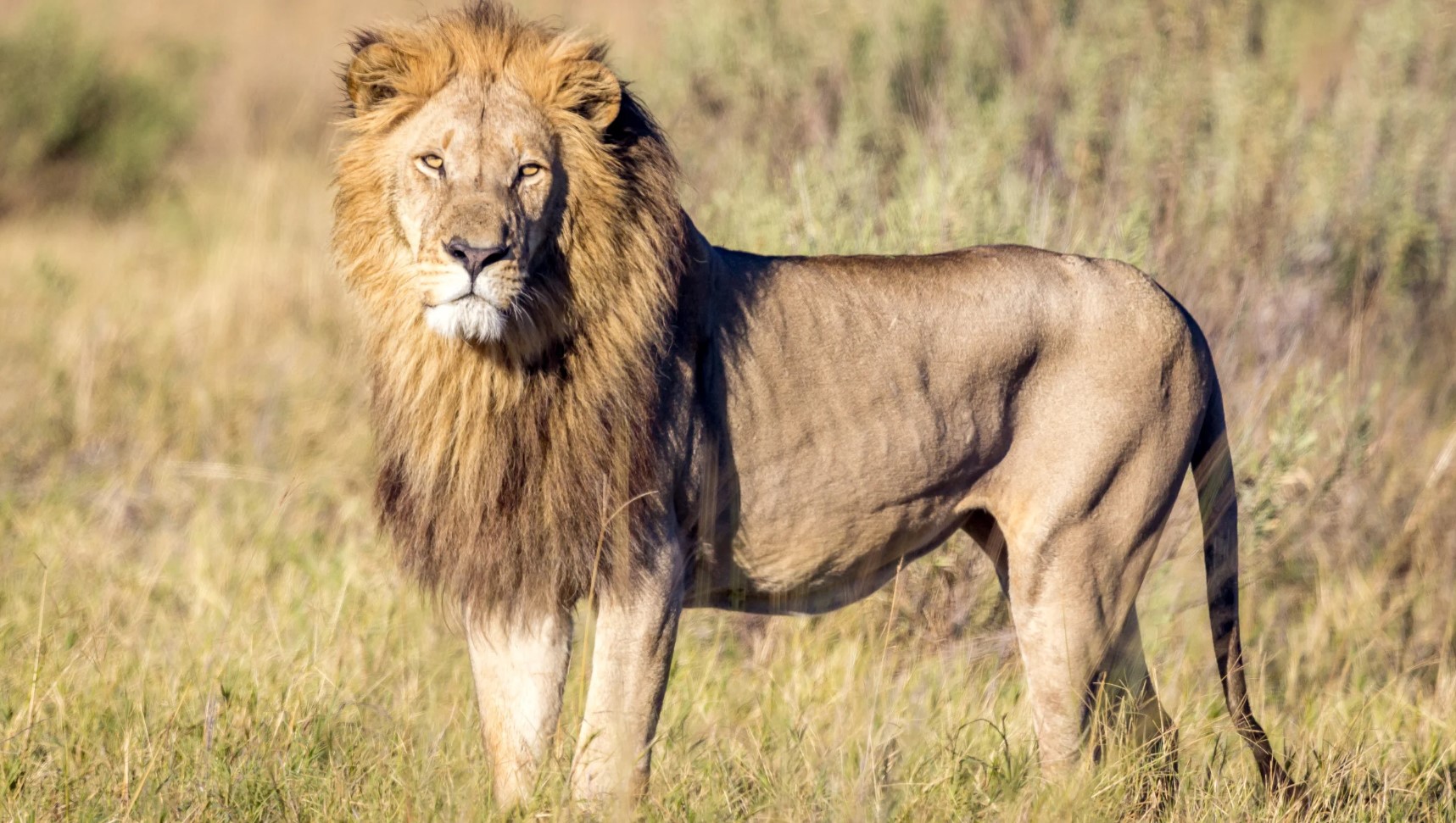
Best Places To See Lions İn The Wild: National Parks And Safaris
Going on a safari is a dream come true for many people. Seeing magnificent lions in the wild is an experience that promises to be unforgettable. But where are the best places to see lions in the wild? Here are some of the famous national parks and safaris where you are most likely to encounter the king of the jungle.
1. Maasai Mara National Reserve, Kenya
The Maasai Mara National Reserve is a famous destination for tourists who want to witness the great wildebeest migration across the plains of Kenya. This reserve is home to over 450 species of animals, including the Big Five (elephant, rhino, buffalo, leopard, and lion). The reserve is also a great spot to see cheetahs, giraffes, and zebras.
- Location: Southwestern Kenya, along the Tanzanian border
- Size: 1,510 square kilometers
2. Serengeti National Park, Tanzania
The Serengeti National Park is one of the most famous wildlife sanctuaries in the world. It is home to over 2,500 lions and 350 bird species. You can also spot leopards, cheetahs, and hyenas in this national park. The park is a UNESCO World Heritage Site and is known for its wide-open spaces, diverse habitats, and abundance of wildlife.
- Location: Northern Tanzania
- Size: 14,763 square kilometers
3. Kruger National Park, South Africa
The Kruger National Park is one of Africa’s largest game reserves and is home to over 1,500 lions. The park is also home to other large predators such as leopards, cheetahs, and hyenas. The park is open to visitors all year round and offers guided tours and self-drive options.
- Location: Northeastern South Africa, along the border with Mozambique
- Size: 19,485 square kilometers
If you’re planning a safari adventure to see lions in the wild, these national parks and safaris are excellent places to start. Remember to always listen to your guide’s instructions and respect the wildlife during your visit. Enjoy the thrill of seeing these majestic big cats up close!
Lion Vs Tiger: Comparative Analysis Of Two Big Cats
Lions and tigers are two majestic, apex predators that have captured the imagination of humans for centuries. While they share some similarities, there are distinct differences between these big cats. In this blog post, we will conduct a comparative analysis of lions versus tigers – their physical characteristics, habitats, behaviors, and more.
First, let’s take a look at their physical attributes. Lions and tigers are both equipped with powerful muscles and sharp claws and teeth. One of the most noticeable differences between the two is the lion’s signature mane, which is absent in tigers. Male lions have a thick, voluminous mane that can range from blonde to black, while female lions do not have manes. Tigers, on the other hand, have vertical stripes that help them blend into their forest habitats. They are generally larger than lions and can weigh up to 600 pounds, while lions average around 400 pounds.
- Both lions and tigers are found in the wild, though they inhabit different parts of the world.
- Lions are primarily found in sub-Saharan Africa, while tigers are native to Asia, including countries like India, Russia, and China.
Lions are considered social animals; they live in groups called prides that can number anywhere from 3 to 40 individuals. In contrast, tigers are solitary hunters, only coming together to mate. In terms of their diets, both lions and tigers are carnivores, but they have slightly different hunting styles. Lions are known to hunt in packs, taking down large prey like wildebeest and zebras, while tigers are more stealth hunters, relying on their stripes to camouflage themselves and ambush their prey.
| Category | Lions | Tigers |
|---|---|---|
| Habitat | Sub-Saharan Africa | India, Russia, China |
| Social Behavior | Live in prides | Solitary hunters |
| Diet | Large prey like wildebeest and zebras | Stealth hunters, relying on ambush and camouflage |
In terms of conservation efforts, both lions and tigers face significant threats from habitat loss, poaching, and human-wildlife conflicts. Efforts to protect big cats have included establishing national parks and reserves, implementing anti-poaching measures, and raising awareness about the importance of conservation.
In conclusion, while lions and tigers share some similarities, there are significant differences between these two big cats in terms of their physical characteristics, habitats, hunting styles, and social behaviors. Both are magnificent creatures that inspire awe and wonder, and it is our responsibility to protect them for future generations to enjoy.
Future Of Lions: Challenges And Opportunities İn The 21st Century.
The future of lions is a topic that draws our attention towards the welfare of one of the most majestic animals on the planet. The human conflict with lions has been creating challenges for the conservation of these animals. The disruptive forces of human beings in traditional lion habitats, poaching and habitat destruction has put lions under threat.
In the 21st century, one of the significant challenges that lions face is habitat decline, especially due to urbanization and destruction of wilderness. The shrinking of their habitats has caused a decline in the lion population. This factor demands the attention of the wildlife protection authorities to preserve and enhance the existing lion habitats and create some new ones.
Breeding lion in captivity provides an opportunity for people to study the animal and help with the conservation of the species. These breeding programs play a crucial role in the conservation of lions, as they help build up the populations for release back into their natural habitat. These breeding centers ensure the development of healthy stocks that could repopulate the natural habitats.
- An innovative approach towards preserving lion population, involves working with masai tribes. Educating them on sustainable farming and how to live with the animals safely can prevent conflict.
- Increased tourism with ethical, non-exploitative safari programs is also an opportunity to create an income and motive to preserve lion habitats.
Lions require protection from human exploitation, but with innovative solutions from conservation and science, they have a chance at a better future.